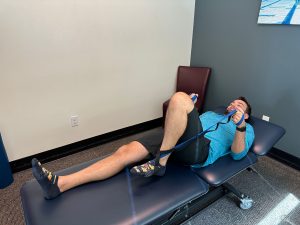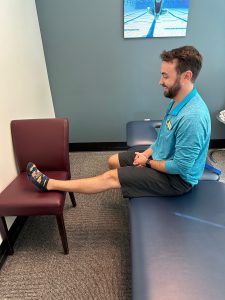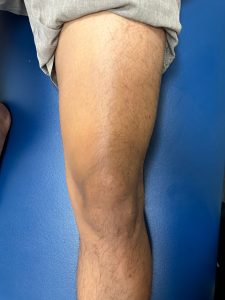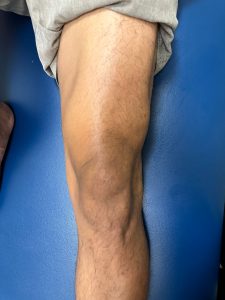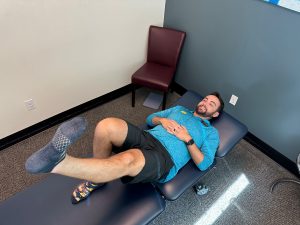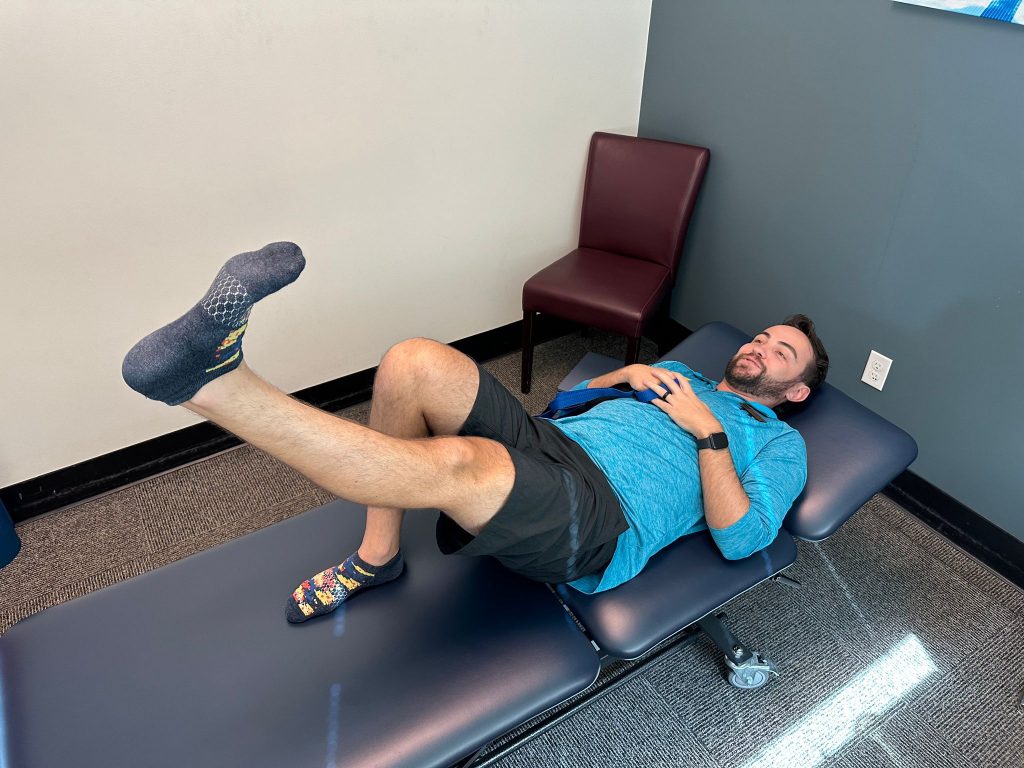
Like many people who injure their anterior cruciate ligament (ACL), you were likely playing a sport when you felt that dreaded “pop” in your knee.
An ACL tear is life-changing for some, but it can also be an opportunity to focus on prioritizing body mechanics and proper movement patterns as you return to sport, even on your “stronger” side. According to statistics from 2017, ACL injuries have a 13.8% recurrence rate, which is quite high. Half of the recurrences happen on the other side, or the “strong” knee. (1) One of the main reasons is due to faulty body mechanics and inadequate strength to protect both knees, so heed this warning to work on building a bulletproof body by taking rehabilitation seriously from day one.
If you’ve injured your ACL and you need surgery, ask your doctor about prehabilitation to get a head start on your recovery. Here’s what to expect.
What Happens After I Injured My ACL?
Initially, pain and swelling set in as your body responds to the damaged tissue, but this makes it difficult to move the knee, put weight on your leg, and walk normally. You’ll also notice that the swelling makes you feel weaker, inhibiting your muscles from working properly.
Many notice that swelling and pain subsides over time, but the knee still feels unstable. Some people opt against surgery and would rather rehab the knee without repairing the ACL. While there is evidence that ACLs spontaneously heal, it doesn’t happen in every case. Read our article on conservative treatment for ACLs to learn more.
For most people, surgery is the best long-term option that allows you to return to your previous level of activity. But you don’t have to wait around for your surgical date to get started on your recovery. If your doctor approves, you can do a few things to help improve your motion, strength, and walking as a head start on your rehabilitation.
What is ACL Prehab?
Prehab is rehabilitation prior to having surgery. Research has found that there was an increased success rate of ACL surgery if you participate in a prehab program. (2)
There are three specific goals during prehab that are focused on making your surgery go as smoothly as possible:
- Establishing a “quiet” knee: This means addressing the swelling that has accumulated in the knee joint. Having any amount of swelling can limit our movement, create stiffness, and limit our quadriceps’ strength.
- Restoring range of motion: We want to make sure that the knee can move as much as it can prior to going into surgery. The goal is to establish full range of motion compared to the uninjured side
- Improving quadriceps’ activation and strength: Once the swelling is under control we need to be able to activate that quad again because it is integral in the ability to walk, run, stand, and squat.
What Exercises Do I Do in ACL Prehab?
There are a variety of exercises that your physical therapist may teach you to address the specific needs of your knee. These exercises may seem simple, but make sure to check in with your therapist to gain a full understanding of the purpose of these exercises relative to your specific injury. They’ll likely teach you some helpful tips and tricks to maximize those benefits, too!
Here are a few examples you might see when you attend your first prehab session:
Heel slides
Heel slides are great to get your knee moving. This motion can help improve the swelling that has settled in the knee joint, along with helping to restore the total range of motion. In the image below, our therapist is demonstrating with a leash or rope to help, but isn’t pushing past pain.
Knee extension hangs
Sitting with your heel propped on a chair or coffee table is a great exercise to help get your knee to achieve full extension. Attaining full extension is crucial to allowing your quadriceps muscle to function appropriately and allow us to walk and stand normally.
Quad sets
Squeezing your quad muscle with your leg straight helps to re-establish activation of the quadriceps muscle. This will allow you to begin strengthening the quad and normalizing the mechanics of the knee joint.
Straight leg raise
Starting with our quad set above, then lifting the leg in the air is a great exercise to challenge with quadriceps and hip flexor muscles. Your knee must be able to stay completely straight throughout this exercise, so you may need to work on your mobility and quad sets first before tackling this one.
It’s important to note that prehab may look different for every injury. Some people have more swelling than others, and some injuries are more complicated, involving the meniscus and other ligaments. You should always ask your doctor if you’re appropriate for prehab.
How Long Does It Take to Prehab My Knee?
Prehab programs can usually achieve the goals above in about one to two months. This gives the knee time to decrease its swelling, restore range of motion, and improve muscle activation and strength. This is also a great time to establish a good connection with your physical therapist and ask questions about the upcoming post-surgical rehab process!
Reach out!
If you think JACO Rehab may be a good fit for you, reach out to us at 808-381-8947 or info@jacorehab.com to schedule an appointment with us today.
Written by Patrick Morton, DPT
Sources
1. Schilaty, N. D., Nagelli, C., Bates, N. A., Sanders, T. L., Krych, A. J., Stuart, M. J., & Hewett, T. E. (2017). Incidence of Second Anterior Cruciate Ligament Tears and Identification of Associated Risk Factors From 2001 to 2010 Using a Geographic Database. Orthopaedic Journal of Sports Medicine, 5(8). https://doi.org/10.1177/2325967117724196
2. Cunha J, Solomon DJ. ACL Prehabilitation Improves Postoperative Strength and Motion and Return to Sport in Athletes. Arthrosc Sports Med Rehabil. 2022 Jan 28;4(1):e65-e69. doi: 10.1016/j.asmr.2021.11.001. PMID: 35141537; PMCID: PMC8811524. https://www.ncbi.nlm.nih.gov/pmc/articles/PMC8811524//
